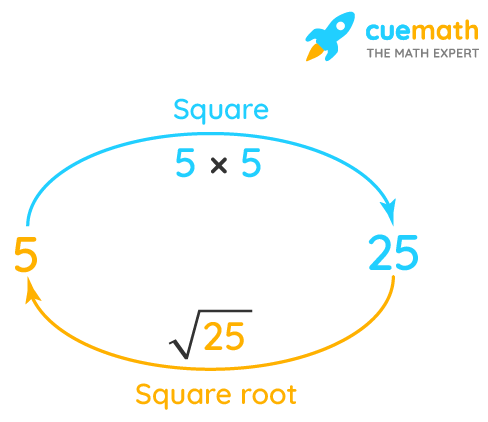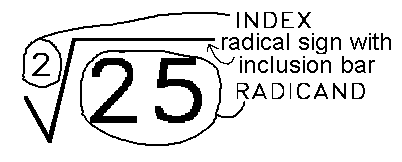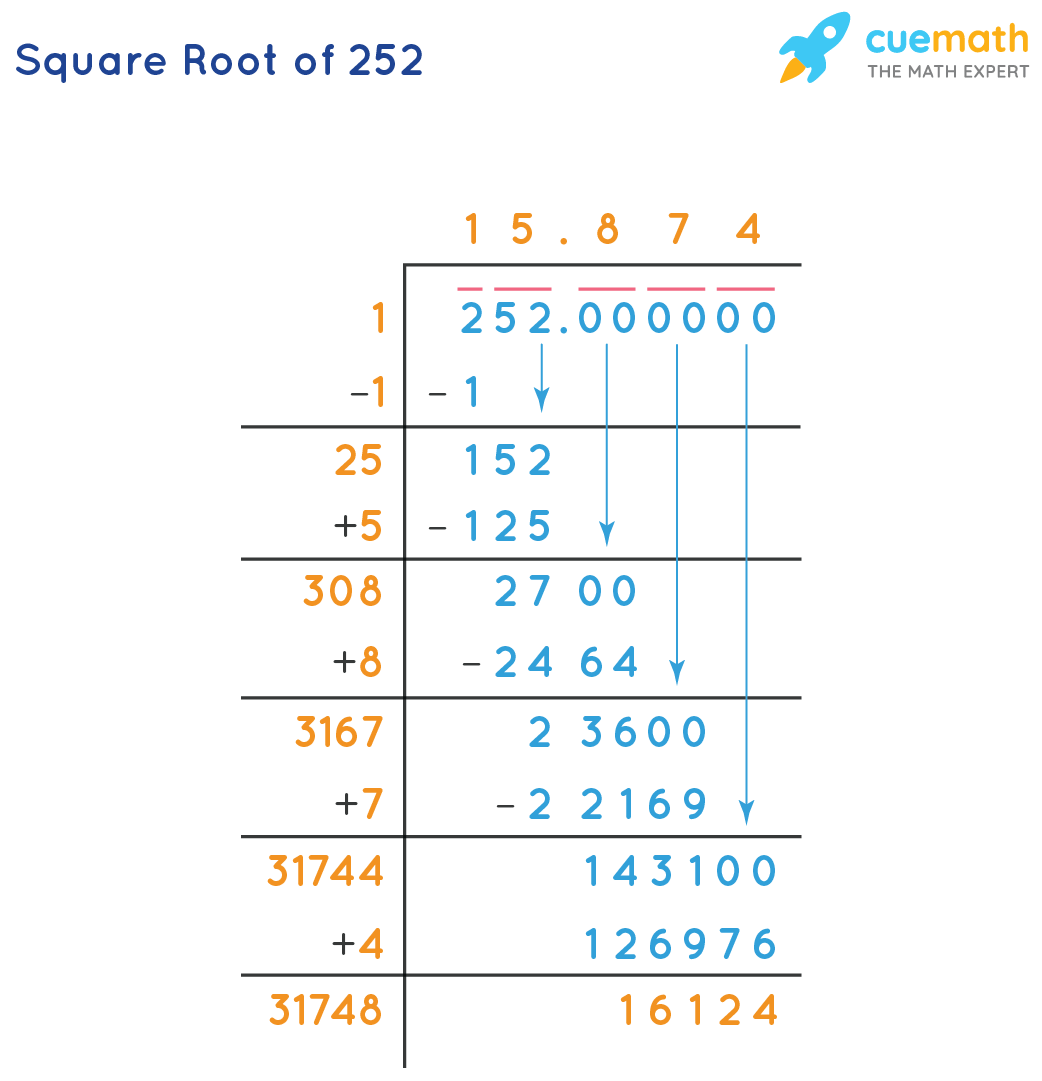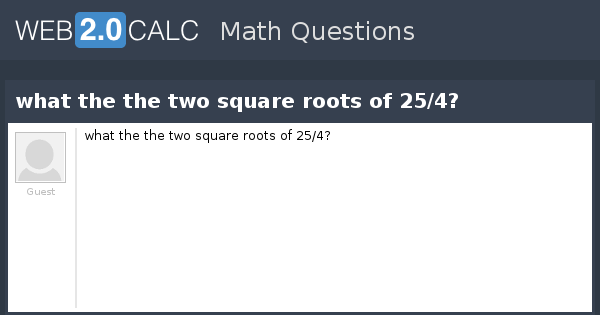Topic is the square root of 25 rational or irrational: Understanding whether the square root of 25 is rational or irrational is crucial for students and math enthusiasts alike. This article delves into the definitions of rational and irrational numbers, explores the calculation of the square root of 25, and provides a clear and concise explanation of why it falls into the rational category.
Table of Content
- Is the Square Root of 25 Rational or Irrational?
- Introduction to Rational and Irrational Numbers
- Definition of a Rational Number
- Definition of an Irrational Number
- Understanding Square Roots
- Square Root of 25
- Calculation of the Square Root of 25
- Determining the Rationality of the Square Root of 25
- Examples of Rational Numbers
- Examples of Irrational Numbers
- Properties of Rational Numbers
- Properties of Irrational Numbers
- YOUTUBE:
Is the Square Root of 25 Rational or Irrational?
The square root of 25 is a number that, when multiplied by itself, gives the product 25. To determine whether this number is rational or irrational, let's examine the definition of these terms.
Definitions
- Rational Number: A number that can be expressed as the quotient or fraction a/b of two integers, where a and b are integers and b is not zero.
- Irrational Number: A number that cannot be expressed as a simple fraction; it is a decimal that goes on forever without repeating.
Calculation
To find the square root of 25, we look for a number that, when squared, equals 25:
\(\sqrt{25} = 5\)
Rationality Check
The number 5 can be expressed as the fraction \(\frac{5}{1}\), which is a quotient of two integers (5 and 1) with a non-zero denominator.
Conclusion
Since 5 can be written as a fraction of two integers, the square root of 25 is a rational number.

READ MORE:
Introduction to Rational and Irrational Numbers
Understanding the distinction between rational and irrational numbers is fundamental in mathematics. This section provides a detailed introduction to these two types of numbers, highlighting their definitions and properties.
- Rational Numbers: A rational number is any number that can be expressed as a fraction \(\frac{a}{b}\), where \(a\) and \(b\) are integers, and \(b\) is not zero. These numbers can be either positive or negative and include integers, fractions, and terminating or repeating decimals. For example:
- Integers: -3, 0, 4
- Fractions: \(\frac{1}{2}\), \(\frac{-7}{3}\)
- Repeating Decimals: 0.333... (which is \(\frac{1}{3}\)), 1.666... (which is \(\frac{5}{3}\))
- Irrational Numbers: An irrational number is any number that cannot be expressed as a simple fraction. These numbers have non-terminating and non-repeating decimal expansions. Examples include:
- \(\pi\) (Pi) - approximately 3.14159, the ratio of a circle's circumference to its diameter
- \(e\) (Euler's Number) - approximately 2.71828, the base of the natural logarithm
- \(\sqrt{2}\) - approximately 1.41421, the square root of 2
Both rational and irrational numbers are essential components of the real number system, which encompasses all possible numbers along the number line. Understanding these categories helps in identifying and working with different types of numbers in various mathematical contexts.
Definition of a Rational Number
A rational number is any number that can be expressed as the quotient or fraction \(\frac{a}{b}\), where \(a\) and \(b\) are integers and \(b \neq 0\). These numbers can be represented in various forms, including integers, finite decimals, and repeating decimals. Below is a detailed explanation of the characteristics of rational numbers:
- Integers: Any whole number, positive or negative, is a rational number because it can be written as a fraction with a denominator of 1. For example:
- 5 can be written as \(\frac{5}{1}\)
- -3 can be written as \(\frac{-3}{1}\)
- 0 can be written as \(\frac{0}{1}\)
- Finite Decimals: A decimal number that has a finite number of digits can be converted into a fraction, making it a rational number. For example:
- 0.75 can be written as \(\frac{75}{100}\), which simplifies to \(\frac{3}{4}\)
- 1.2 can be written as \(\frac{12}{10}\), which simplifies to \(\frac{6}{5}\)
- Repeating Decimals: A decimal number that has a repeating pattern can also be expressed as a fraction. For example:
- 0.333... (repeating) can be written as \(\frac{1}{3}\)
- 1.666... (repeating) can be written as \(\frac{5}{3}\)
The key characteristic of rational numbers is their ability to be represented as fractions of integers. This property distinguishes them from irrational numbers, which cannot be expressed in such a manner.
Definition of an Irrational Number
An irrational number is a real number that cannot be expressed as a simple fraction or ratio of two integers. In other words, it cannot be written in the form \(\frac{a}{b}\) where a and b are integers and b ≠ 0.
Key characteristics of irrational numbers include:
- They have non-repeating, non-terminating decimal expansions. For example, the decimal representation of an irrational number goes on forever without repeating.
- Common examples of irrational numbers include π (pi), e (Euler's number), and the square roots of non-perfect squares, such as \(\sqrt{2}\), \(\sqrt{3}\), and \(\sqrt{5}\).
- Irrational numbers cannot be accurately represented as a fraction of two integers, making them fundamentally different from rational numbers.
Mathematically, a number is considered irrational if it cannot be written as:
\(\frac{a}{b}\) where a and b are integers and b ≠ 0.
The discovery of irrational numbers dates back to ancient Greek mathematicians, who realized that certain geometric lengths could not be expressed as ratios of whole numbers, leading to the concept of irrationality.
In summary, irrational numbers play a crucial role in mathematics, filling in the gaps between rational numbers on the number line and contributing to a deeper understanding of number theory and real analysis.
Understanding Square Roots
The square root of a number is a value that, when multiplied by itself, gives the original number. In mathematical terms, the square root of a number x is a number y such that y2 = x. The square root is denoted by the radical symbol √.
For example:
- The square root of 9 is 3 because \(3 \times 3 = 9\).
- The square root of 16 is 4 because \(4 \times 4 = 16\).
Square roots can be classified into two categories:
- Perfect Square Roots: These are square roots of perfect squares, which are numbers that are the product of an integer multiplied by itself. For example, 1, 4, 9, 16, and 25 are perfect squares, so their square roots (1, 2, 3, 4, and 5 respectively) are whole numbers.
- Non-Perfect Square Roots: These are square roots of numbers that are not perfect squares. These roots are irrational numbers, meaning their decimal expansion is non-repeating and non-terminating. For example, the square root of 2 (\(\sqrt{2}\)) is approximately 1.4142135..., and it cannot be expressed as a fraction of two integers.
The principal square root is the non-negative root of a number. While every positive number has two square roots (one positive and one negative), the term "square root" typically refers to the principal, or positive, root.
Here are some properties of square roots:
- \(\sqrt{x^2} = |x|\), meaning the square root of a squared number is the absolute value of the original number.
- \(\sqrt{a \times b} = \sqrt{a} \times \sqrt{b}\), indicating that the square root of a product is the product of the square roots.
- \(\sqrt{\frac{a}{b}} = \frac{\sqrt{a}}{\sqrt{b}}\), indicating that the square root of a quotient is the quotient of the square roots.
Understanding square roots is fundamental in mathematics, as they appear in various areas including algebra, geometry, and calculus. They are essential for solving quadratic equations, understanding the Pythagorean theorem, and analyzing many natural phenomena.

Square Root of 25
The square root of 25 is a number that, when multiplied by itself, equals 25. To determine this, we can use the definition of a square root. Mathematically, we are looking for a number y such that:
\(y^2 = 25\)
By inspection or calculation, we find that:
\(5 \times 5 = 25\)
Therefore, \(5\) is a square root of \(25\). Since the square root function typically refers to the principal (non-negative) square root, we identify:
\(\sqrt{25} = 5\)
Here are key points about the square root of 25:
- The square root of 25 is 5 because \(5^2 = 25\).
- The calculation is straightforward because 25 is a perfect square.
- The square root of a perfect square is always a rational number.
To illustrate the steps more clearly, let's consider the following:
- Identify that 25 is a perfect square.
- Find the number which, when multiplied by itself, gives 25.
- Confirm that \(5 \times 5 = 25\).
- Thus, \(\sqrt{25} = 5\).
In conclusion, the square root of 25 is 5, which is a rational number because it can be expressed as the fraction \( \frac{5}{1} \), where both the numerator and the denominator are integers.
Calculation of the Square Root of 25
Calculating the square root of 25 involves finding a number that, when multiplied by itself, equals 25. This process can be understood through the following steps:
- Identify Perfect Squares: First, recognize that 25 is a perfect square. Perfect squares are numbers that are the product of an integer multiplied by itself, such as 1, 4, 9, 16, 25, etc.
- Apply the Definition: According to the definition of a square root, we need to find a number y such that:
\(y^2 = 25\)
- Determine the Root: To find this number, we consider integers whose squares are known. Since \(5 \times 5 = 25\), we determine that:
\(y = 5\)
- Verification: Verify the result by squaring it again:
\(5^2 = 25\)
Since this holds true, the calculation is confirmed correct.
Thus, the principal (positive) square root of 25 is:
\(\sqrt{25} = 5\)
It is important to note that every positive number has two square roots: a positive and a negative root. Therefore, in a broader sense, the square roots of 25 are:
\(\pm 5\)
However, the principal square root, which is the positive value, is generally the one referred to when calculating square roots.
In summary, the calculation of the square root of 25 confirms that it is 5, a rational number, because it can be expressed as the fraction \(\frac{5}{1}\), where both the numerator and the denominator are integers.
Determining the Rationality of the Square Root of 25
To determine whether the square root of 25 is rational or irrational, we first need to recall the definitions of rational and irrational numbers:
- A rational number can be expressed as a fraction \(\frac{a}{b}\), where \(a\) and \(b\) are integers and \(b \neq 0\).
- An irrational number cannot be expressed as a fraction of two integers. It has a non-repeating, non-terminating decimal expansion.
Next, let's find the square root of 25:
\[
\sqrt{25} = 5
\]
Since 5 is an integer, it can be expressed as a fraction \(\frac{5}{1}\), which is the form of a rational number. Therefore, the square root of 25 is:
\[
\sqrt{25} = 5
\]
Thus, the square root of 25 is a rational number because it can be expressed as a simple fraction \(\frac{5}{1}\).
Examples of Rational Numbers
Rational numbers are numbers that can be expressed as a fraction where both the numerator and the denominator are integers, and the denominator is not zero. Here are some examples:
- Integers: These include all positive and negative whole numbers, as well as zero.
- Examples: -3, -2, -1, 0, 1, 2, 3
- Fractions: Any number that can be expressed as a ratio of two integers.
- Examples: \(\frac{1}{2}\), \(\frac{3}{4}\), \(\frac{-5}{6}\), \(\frac{7}{1} = 7\)
- Terminating Decimals: Decimals that come to an end.
- Examples: 0.5 (\(\frac{1}{2}\)), 1.25 (\(\frac{5}{4}\)), 3.0 (\(\frac{3}{1}\))
- Repeating Decimals: Decimals that have one or more repeating digits after the decimal point.
- Examples: 0.333... (\(\frac{1}{3}\)), 1.666... (\(\frac{5}{3}\)), 2.142857... (\(\frac{15}{7}\))
These examples illustrate that rational numbers can be represented in multiple forms, including whole numbers, fractions, and both terminating and repeating decimals.

Examples of Irrational Numbers
Irrational numbers are numbers that cannot be expressed as a simple fraction or ratio of two integers. They have non-repeating, non-terminating decimal expansions. Here are some common examples of irrational numbers:
- Pi (\(\pi\)): The value of \(\pi\) is approximately 3.14159, but it continues infinitely without repeating. It is often used in geometry, particularly in calculations involving circles.
- Euler's Number (e): The base of natural logarithms, \(e\) is approximately 2.71828 and is used extensively in calculus and complex analysis.
- Square Root of Non-Perfect Squares: Any square root of a number that is not a perfect square is irrational. Examples include:
- \(\sqrt{2}\): Approximately 1.41421, it cannot be expressed as a fraction and is the length of the diagonal of a unit square.
- \(\sqrt{3}\): Approximately 1.73205, it is also an irrational number and appears in various geometric contexts.
- \(\sqrt{5}\): Approximately 2.23607, it cannot be written as a ratio of two integers.
- Golden Ratio (\(\phi\)): The golden ratio, approximately 1.61803, appears in many natural phenomena and art. It is defined algebraically as \(\frac{1 + \sqrt{5}}{2}\).
Irrational numbers are crucial in mathematics as they help to complete the real number line, ensuring that there are no gaps between the numbers that can be expressed as fractions. These numbers often appear in geometry, algebra, and calculus, providing a deeper understanding of continuous quantities.
Properties of Rational Numbers
Rational numbers possess several distinct properties that set them apart from irrational numbers. Here are some key properties of rational numbers:
- Definition: A rational number is any number that can be expressed as the quotient or fraction of two integers, where the numerator is an integer and the denominator is a non-zero integer. Mathematically, it can be written as \( \frac{a}{b} \), where \( a \) and \( b \) are integers and \( b \neq 0 \).
- Closed Under Addition, Subtraction, Multiplication:
- Addition: The sum of any two rational numbers is also a rational number. For example, \( \frac{1}{2} + \frac{3}{4} = \frac{5}{4} \).
- Subtraction: The difference between any two rational numbers is also a rational number. For example, \( \frac{3}{4} - \frac{1}{2} = \frac{1}{4} \).
- Multiplication: The product of any two rational numbers is also a rational number. For example, \( \frac{2}{3} \times \frac{3}{4} = \frac{1}{2} \).
- Division: The quotient of any two rational numbers is a rational number, provided the divisor is not zero. For example, \( \frac{\frac{3}{4}}{\frac{2}{5}} = \frac{3}{4} \times \frac{5}{2} = \frac{15}{8} \).
- Decimal Representation: Rational numbers either terminate after a finite number of digits or begin to repeat a sequence of digits infinitely. For example, \( \frac{1}{4} = 0.25 \) (terminating) and \( \frac{1}{3} = 0.333\ldots \) (repeating).
- Dense in Real Numbers: Between any two rational numbers, there is another rational number. This property indicates that rational numbers are densely packed on the real number line.
- Equivalent Fractions: Rational numbers can be represented by an infinite number of equivalent fractions. For example, \( \frac{1}{2} = \frac{2}{4} = \frac{3}{6} \), etc.
These properties make rational numbers an integral part of arithmetic and algebra, facilitating various mathematical operations and problem-solving strategies.
Properties of Irrational Numbers
Irrational numbers have several distinct properties that differentiate them from rational numbers. Here are the key properties:
- Non-Terminating and Non-Repeating Decimals: Irrational numbers cannot be expressed as a fraction of two integers. Their decimal representation goes on forever without repeating. For example, the number π (pi) is approximately 3.14159..., and its decimal part continues infinitely without any repeating pattern.
- Cannot Be Expressed as a Simple Fraction: Unlike rational numbers, irrational numbers cannot be written as the ratio of two integers. For instance, the square root of 2 (√2) is an irrational number because it cannot be accurately represented as a fraction.
- Dense in the Real Numbers: Between any two rational numbers, there exists at least one irrational number. This property indicates that irrational numbers are densely packed within the real number line.
- Examples of Irrational Numbers: Some common examples of irrational numbers include π (pi), e (Euler's number), and the square roots of non-perfect squares like √2, √3, and √5. These numbers cannot be written as exact fractions.
- Operations with Irrational Numbers: The sum or product of a rational number and an irrational number is always irrational. For example, if you add a rational number, such as 1, to an irrational number, such as √2, the result (1 + √2) is still irrational.
Understanding these properties helps in identifying and working with irrational numbers in various mathematical contexts.
Bằng chứng rằng căn bậc hai của BẤT KỲ số nguyên nào là vô tỉ (ngoại trừ số chính phương)














